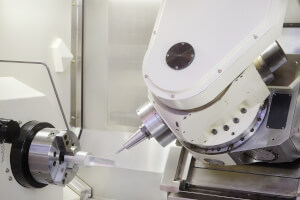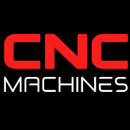Best CNC Machine to Start With: Mill or Lathe?
Best CNC Machine to Start With: Mill or Lathe?

Best CNC Machine to Start With: Mill or Lathe?
Choosing the right CNC machine to start with depends on the type of work you plan to do. Both CNC mills and lathes have their unique advantages:
CNC Mill
- Best For: Milling involves cutting solid materials (metal, plastic, wood) into shapes and sizes. It's ideal for producing parts with complex geometries.
- Advantages:
- Versatile: Suitable for a wide range of operations, including drilling, cutting, and carving.
- Precision: High level of accuracy for detailed parts.
- Recommended Model: A small to medium-sized CNC mill, such as the Haas Mini Mill or Tormach PCNC 440.
- Size and Speed:
- Table Size: 16" x 12" x 10" (for a compact mill like the Haas Mini Mill)
- Spindle Speed: Up to 6,000 RPM
- Power: 5-10 HP
CNC Lathe
- Best For: Lathes are used to create cylindrical parts by rotating the material against a cutting tool.
- Advantages:
- Ideal for symmetrical parts: Such as shafts, cylinders, and threaded components.
- Simple setup: Easier to set up for specific tasks.
- Recommended Model: A small CNC lathe, such as the Haas TL-1 or Tormach 15L Slant-PRO.
- Size and Speed:
- Swing Over Bed: 10" to 16"
- Spindle Speed: Up to 3,000 RPM
- Power: 5-10 HP
Case Study: From Garage Startup to 5,000 sq ft Shop
Background
John, an engineer with a passion for machining, started a CNC machining business in his two-car garage. He aimed to create custom parts for the automotive and aerospace industries.
Year 1: Setting Up
- Initial Equipment: John purchased a Haas Mini Mill and a Tormach 15L Slant-PRO lathe. These machines were chosen for their versatility and compact size, fitting well in his garage.
- Projects: Began with small custom parts, focusing on high-quality, low-volume production.
- Marketing: Utilized online platforms, social media, and word-of-mouth to attract local customers.
Year 2: Growing Demand
- Increased Capacity: Due to high demand, John added another Haas Mini Mill and a Tormach 770M.
- Diversification: Expanded services to include prototyping and small-batch production for medical devices.
- Hiring: Brought in two part-time machinists to help with increased workload.
Year 3: Major Expansion
- Relocation: Moved to a 5,000 sq ft facility to accommodate growing business needs.
- New Equipment: Invested in 10 more CNC machines, including Haas VF-2 and VF-3 mills, and additional Tormach lathes.
- Automation: Implemented automation solutions like robotic arms for part handling and automated tool changers.
- Success Factors:
- Quality and Precision: Maintained high standards for all products.
- Customer Relationships: Focused on building strong, long-term relationships with clients.
- Adaptability: Quickly adapted to market needs, offering new services like rapid prototyping and custom part production.
Key Takeaways for Starting Your Own CNC Shop
- Start Small: Begin with versatile, high-quality CNC machines that fit your initial budget and space.
- Focus on Quality: Prioritize precision and quality in your work to build a reputation.
- Market Effectively: Utilize online marketing and networking to attract customers.
- Scale Gradually: Expand your capacity as demand grows, reinvesting profits into new equipment and technology.
- Adapt and Innovate: Stay flexible and open to new opportunities and technologies to stay competitive.


